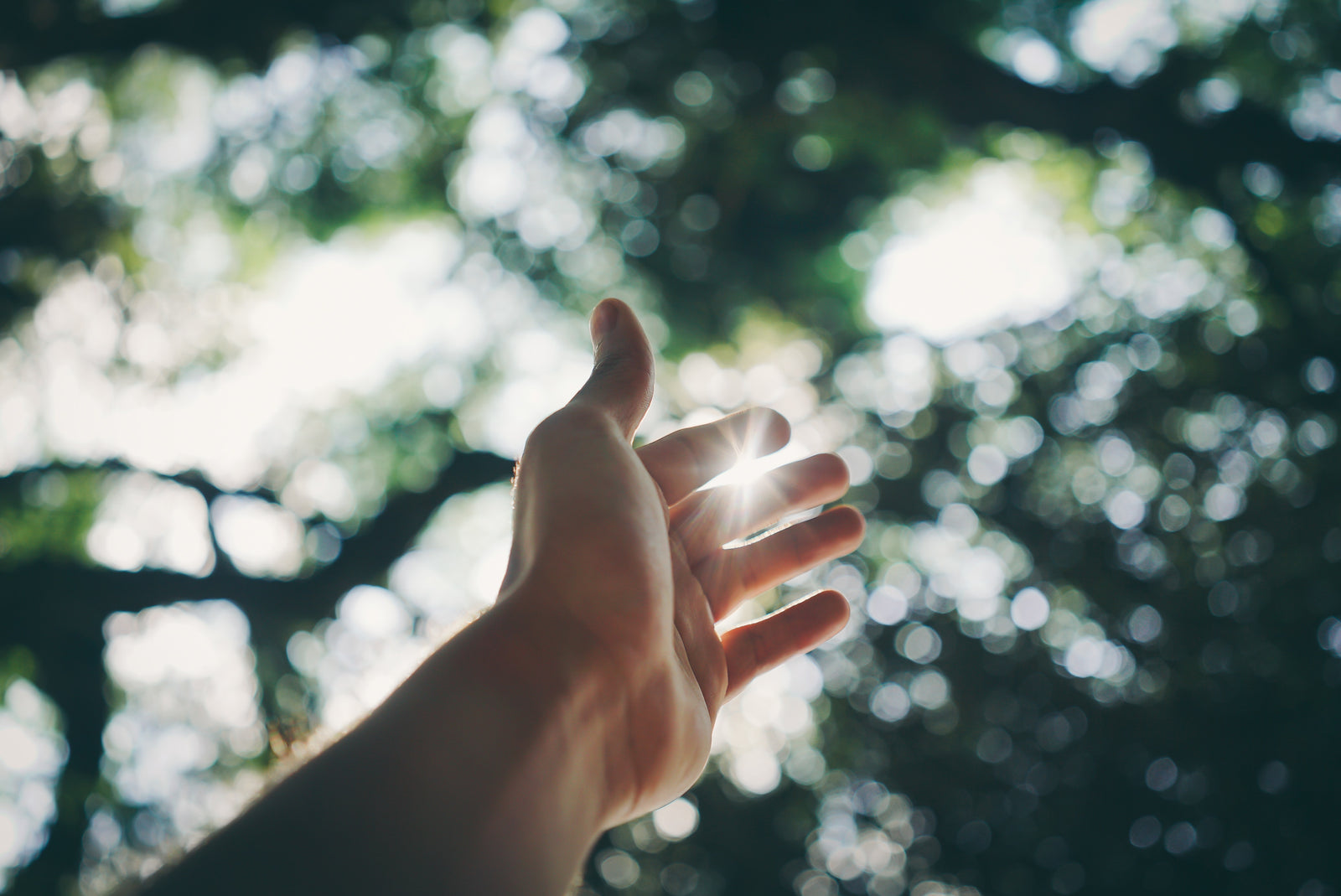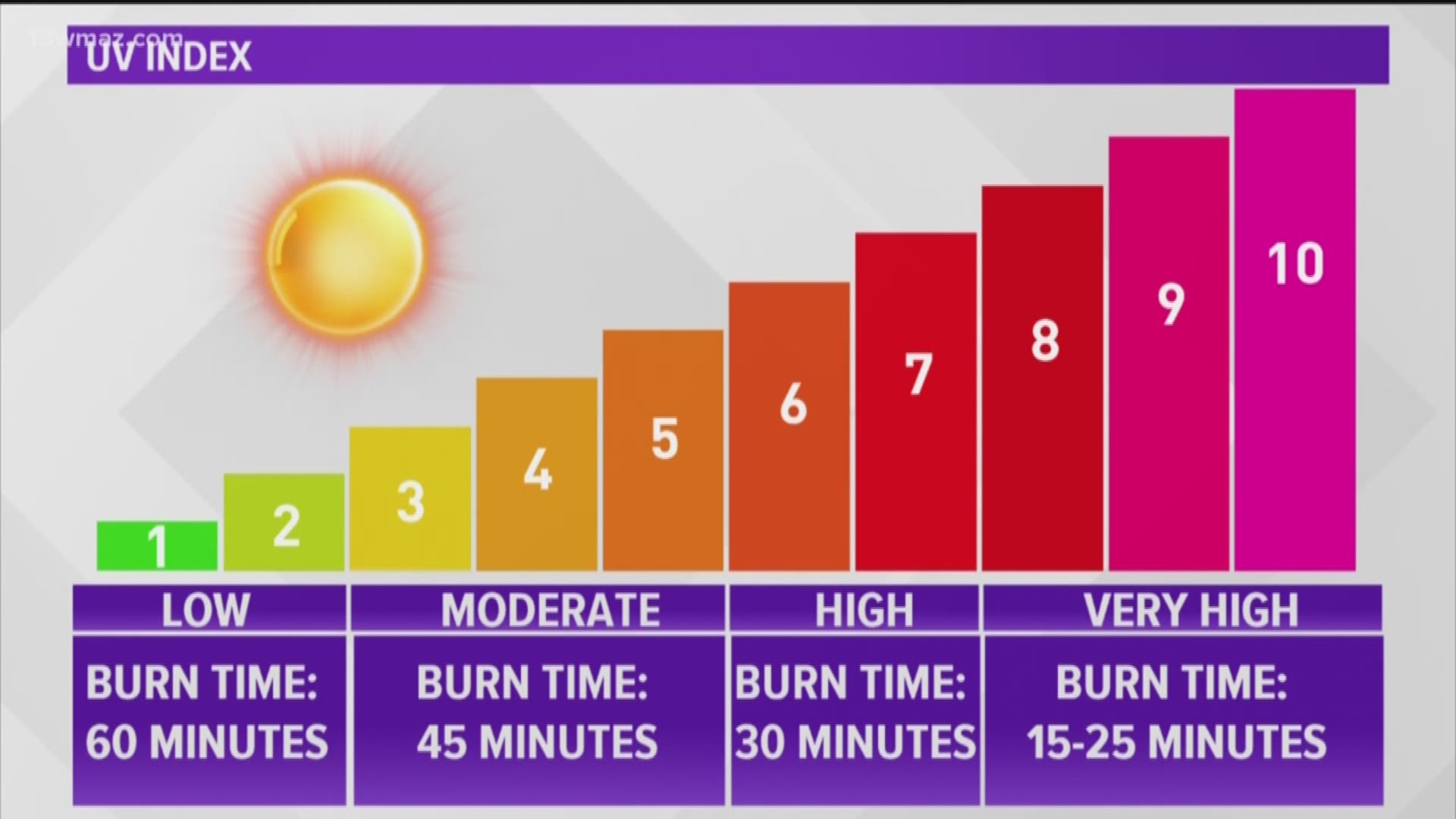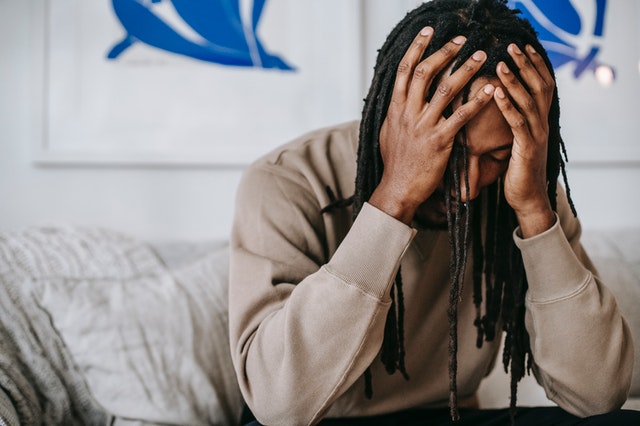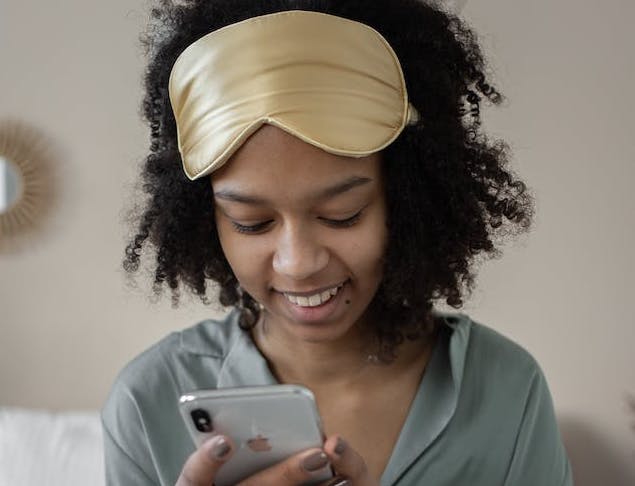Light and the absence of light both play a powerful role in our circadian rhythms, sleep quality, and alertness levels.
The presence of light signals that it’s time to be alert and awake, while darkness signals that it’s time to wind down.
However, too much sun exposure causes skin damage and fatigue, and you may find yourself asking, “why does sunlight make me sleepy?”
Our eyes are most sensitive to light upon waking up, in the hours before bedtime, and during sleep, but our skin is always sensitive to sunlight.
That’s why a balance of light and dark (with skin protection in mind) is crucial for a balanced sleep schedule.
Here Comes The Sun: Light and Circadian Rhythm
Our circadian rhythm is the 24-hour cycle that controls our sleep-wake patterns, body temperature, hunger cues, and more.
External influences regulate these rhythms, including light. Light sends signals to the brain to increase alertness, while the absence of light sends signals to increase sleepiness.

How does this work? Light exposure from the eyes signals to the brain to promote wakefulness by suppressing melatonin production, a sleep hormone that helps us drift off.
However, in the evening hours, the absence of light causes melatonin production to ramp up, helping us fall asleep.
Recent research found that those who spent one to two hours outdoors regularly were less likely to experience anxiety and sleep challenges.
What’s more, the same group of studies found that people who let natural light stream into their homes fall asleep 22 minutes earlier than those who don’t.
They also slept more regularly and were happier overall when compared to those who keep the curtains pulled shut.
A separate experiment revealed that office workers exposed to bright morning light for five days experienced an easier time making decisions and scored higher on cognitive tests when compared to those who skipped basking in the morning sunlight.
Therefore, you’ll benefit most from light exposure if you can get it first thing in the morning.
Brighten Up Your Morning
Seeing sunlight each day helps synchronize your internal clock, keeping it in rhythm.
However, viewing natural light within the first few hours of waking ensures that your melatonin production is optimized for the evening time, once the sun goes down.

Seeing morning light at the same time each day also helps you keep a regular, consistent bedtime as opposed to an erratic sleep schedule.
Neuroscientist Andrew Huberman says that even on cloudy days, exposure to natural morning sunlight within the first one to two hours of waking is key for setting our biological clock.
“If sunlight reaches your eyes soon after you wake, it triggers a neural circuit that controls the timing of the hormones cortisol and melatonin,” Huberman shared with Stanford Medicine in 2020.
Huberman also says direct light is best. That means no windows, no sunglasses, and no hats or visors.
Aim for around 30 minutes of daily morning light exposure in total, if possible.
If you live in a cold climate or the temperature is too cold to sit outside, head to your vehicle, crank up the heater, and roll down the window for an unfiltered stream of light.
@somnifix Experts recommend direct morning sunlight exposure within 1 to 2 hours of waking to boost evening #melatonin production & improve #circadianrhythm ♬ Microwave Popcorn - Bo Burnham
Sunlight is also known to boost your vitamin D levels and increase serotonin, a feel-good, mood-boosting hormone.
That said, too much sun might cause extreme fatigue and skin damage. Be sure to protect your skin from harmful rays with sunscreen, especially when the UV index is high.
Why Does Sunlight Make Me Sleepy?
If you’ve ever asked yourself, “why does sunlight make me sleepy?” It may be because you’ve spent too much time laying out.
While light exposure helps us produce much-needed melatonin to feel drowsy later in the day, too much sun may lead to fatigue due to sunburn.
The ultraviolet index, or UV index, is a measurement of the strength of ultraviolet radiation produced by the sun at a certain place and time.
When the UV index is at its highest, all it takes is 15 minutes of unprotected sun exposure to get a sunburn.
Aside from damaging the skin, feeling painful, and increasing your risk of skin cancer, sunburns lead to fatigue.
Sunburns are known to raise our core body temperature and cause dehydration, which may explain why too much sunlight makes you feel sleepy and lethargic.
To avoid sunburn, always check the UV index before you sit outside. Apply sunscreen regularly and cover your skin with loose-fitting, long-sleeved clothing.
You can still burn on cloudy days, too! As much as 90 percent of the sun’s rays can still pass through clouds.
The sun is arguably the most important source of light. However, light exposure before bed can keep us awake – even when the sun has gone down.
Light from your electronics at night can hinder the light exposure you got in the morning by disrupting the evening darkness you need to wind down.
Light Before Bed = Bad
Melatonin levels rise in the evening due to morning light exposure, but exposure to light in the evening delays its release, causing feelings of alertness.
Bright light is the strongest external cue for our circadian rhythm, telling us what time of day it is. In turn, exposure to bright light before bed confuses the body, disrupting this important rhythm.

This is harmful to our overall health and well-being, as a disrupted circadian rhythm is linked to depression, diabetes, obesity, and more.
Light exposure before bed can throw off your internal clock, but so can light exposure during sleep.
That means sleeping with the television on or with that bright, blinding streetlight streaming into your window is bad news for sleep quality.
In fact, those exposed to light while sleeping are proven to sleep less each night, wake up multiple times per night, and feel fatigued and groggy the next morning.
Moreover, when the blue light emitted from your phone, computer, or digital gadgets floods your eyes at night, your internal clock becomes confused.
While your phone’s screen can’t exactly be compared to the sun, over several hours, your eyes can’t tell the difference.
Natural sunlight emits the entire spectrum of light wavelengths. Blue light, however, has the shortest wavelength of all, making up around a third of all visible light.
Long-term blue light exposure may even damage our vision by raising the risk of macular degeneration, according to recent research.
Most importantly, too much blue light before or during sleep disrupts our circadian cycles, leading to insomnia.
So how can you limit blue light exposure at night?
Block Out Blue Light at Night
Blue light exposure during the day, especially when derived from the morning sun, sends cues to our brain that it’s time to be awake and active.
At night, dim, dark lighting helps us wind down. But how can we promote the absence of light without avoiding our electronics altogether?

While cutting off electronic use one to two hours before bedtime is the most effective way to block out artificial light sources, there are a few other ways to block out blue light during unwanted hours.
- Night lights and candles – dim, red-tinted light has a minimal effect on our circadian function, making it a great source of light at night.
- The “night shift” feature – while avoiding bright screens before bedtime is best, most modern electronics offer a “night shift” feature that shifts screen colors to a warmer hue that reduces blue light levels.
- Blue light glasses – special lenses in blue light-blocking glasses claim to block blue light rays, helping to lower the effects of blue light.
- Blue light-blocking screens – blue light-blocking screen protectors act as blue light glasses for your electronics, filtering out some of the blue light emitted by your screen.
- Try a sleep mask or blackout curtains –if street lights stream into your windows at night, opt for a sleep mask or blackout curtains to reduce your light exposure at night.
Once you’ve blocked out disruptive light at night known to keep you awake, block out dysfunctional breathing for your most optimal sleep yet.
Tape Away Disordered Breathing During Sleep
As we’ve learned, your eyes greatly influence your circadian patterns and sleep quality.
Believe it or not, so do your mouth and nose! When we mouth breathe at night, snoring follows. This disrupts our sleep and leads to poor oxygenation.
Mouth breathing and snoring are proven to harm our health in the long run. Nasal breathing, however, prevents disruptive, disordered breathing at night.
Furthermore, nasal breathing allows for proper oxygenation while boosting nitric oxide production, a powerful molecule that helps reduce stress, boost immunity, and lower inflammation.
Shifting from habitual mouth breathing to nasal breathing takes work – even during sleep. Thankfully, mouth tape offers a no-fuss solution for sealing your lips during sleep.

SomniFix Strips are crafted from recycled, hypoallergenic materials that are gentle on even the most sensitive skin.
In addition, our Strips offer a patented breathing vent that allows for limited oral airflow if needed, so you’ll rest easy knowing that a mouth breathing option is available if you become congested overnight.
Soak up the sun during the day, then achieve functional sleep at night with SomniFix!






